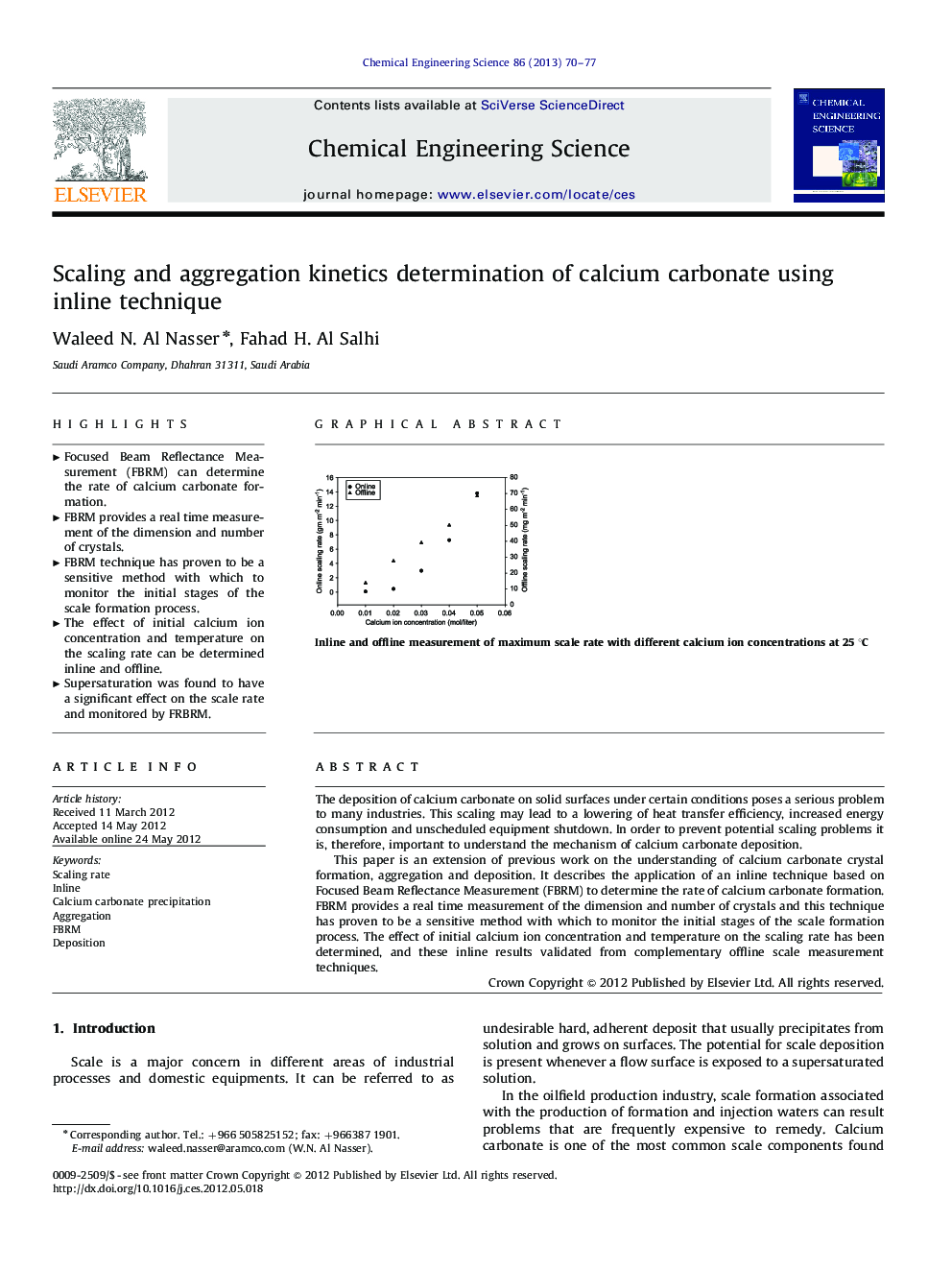| Article ID | Journal | Published Year | Pages | File Type |
|---|---|---|---|---|
| 155448 | Chemical Engineering Science | 2013 | 8 Pages |
The deposition of calcium carbonate on solid surfaces under certain conditions poses a serious problem to many industries. This scaling may lead to a lowering of heat transfer efficiency, increased energy consumption and unscheduled equipment shutdown. In order to prevent potential scaling problems it is, therefore, important to understand the mechanism of calcium carbonate deposition.This paper is an extension of previous work on the understanding of calcium carbonate crystal formation, aggregation and deposition. It describes the application of an inline technique based on Focused Beam Reflectance Measurement (FBRM) to determine the rate of calcium carbonate formation. FBRM provides a real time measurement of the dimension and number of crystals and this technique has proven to be a sensitive method with which to monitor the initial stages of the scale formation process. The effect of initial calcium ion concentration and temperature on the scaling rate has been determined, and these inline results validated from complementary offline scale measurement techniques.
Graphical abstractInline and offline measurement of maximum scale rate with different calcium ion concentrations at 25 °CFigure optionsDownload full-size imageDownload high-quality image (81 K)Download as PowerPoint slideHighlights► Focused Beam Reflectance Measurement (FBRM) can determine the rate of calcium carbonate formation. ► FBRM provides a real time measurement of the dimension and number of crystals. ► FBRM technique has proven to be a sensitive method with which to monitor the initial stages of the scale formation process. ► The effect of initial calcium ion concentration and temperature on the scaling rate can be determined inline and offline. ► Supersaturation was found to have a significant effect on the scale rate and monitored by FRBRM.
